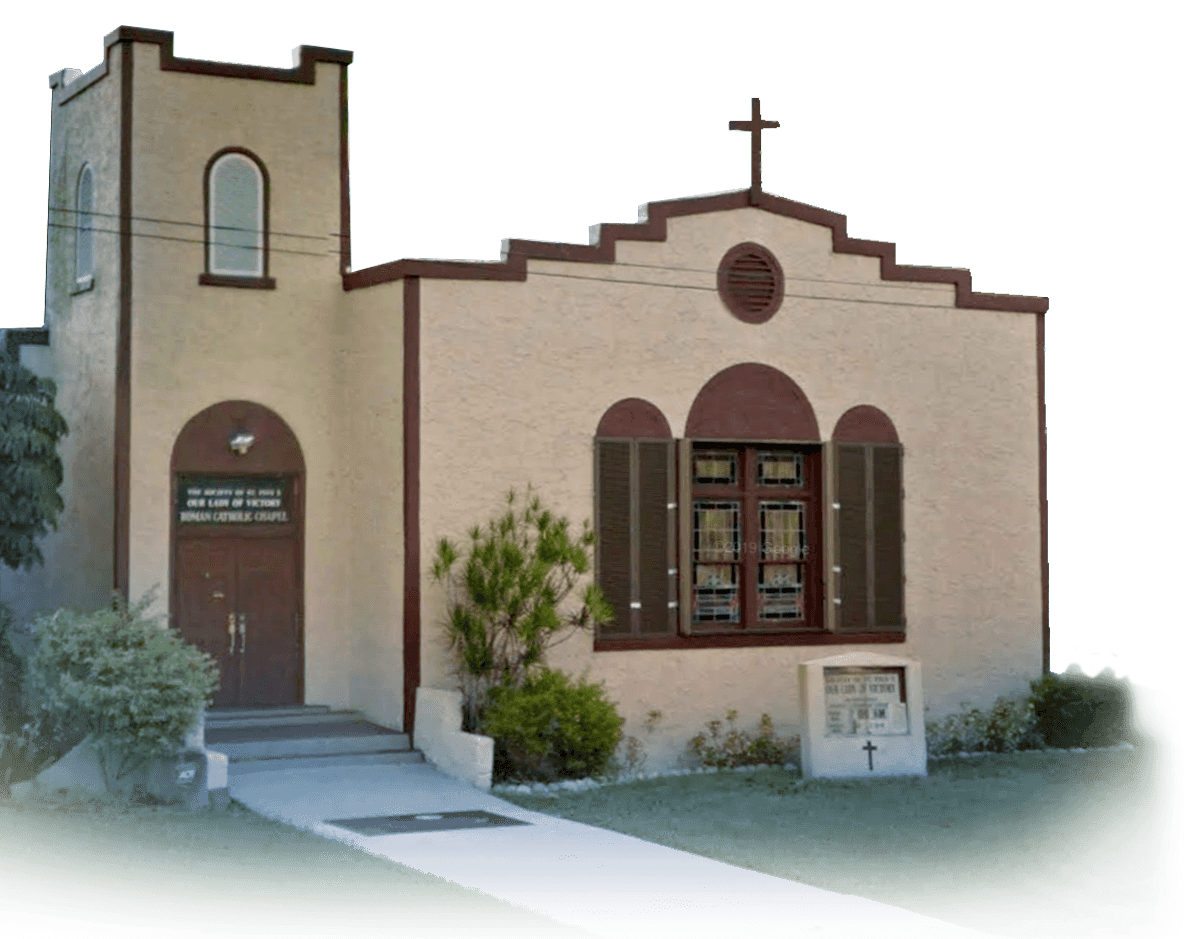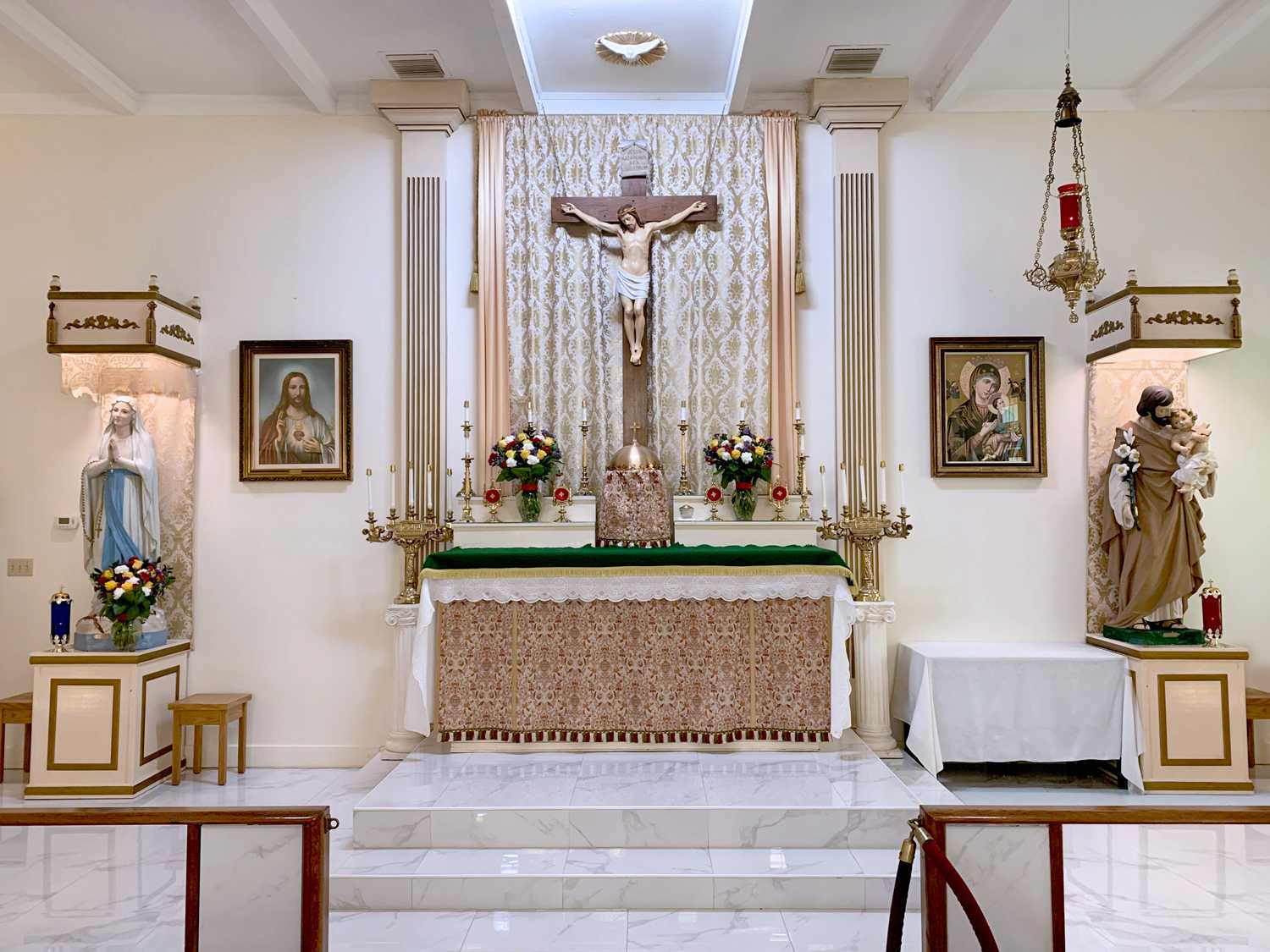“Florida always had Tradition without interruption,” said Fr. Vernoy. “There were a number of faithful priests who continued to say the Mass. The Society came later, but not much later. You had all of these older priests full of generosity and charity, and they tried to maintain what they could. They could not do more than that because there were not enough priests, so they jumped from one place to another, giving the Mass and Confessions.”
These pioneer priests were Fr. Gunther Richter, Fr. Carl Pulvermacher O.F.M. Cap. (who also helped start The Angelus magazine), Fr. Timothy Hopkins, and Fr. Enrique Rueda.
“We owe all of them a debt of gratitude,” Fr. Vernoy said.
"Now, it’s another time for Tradition. The priests and faithful are a much younger group. Our duty today is to feed everybody so they can access the Sacraments properly. Before the treasures of the church were taken from everyone; now, the faithful want to discover the treasures, and we have to pass on all these things. Diocesan and Religious priests come to us and say, ‘The Knowledge of the Church was stolen from us!’ The hunger and thirst are even greater for the faithful. "
After the devastation in the Catholic Church that followed in the wake of the Second Vatican Council, a number of Miami Catholics began attending Assumption Ukrainian Catholic Church. In those early days, the Eastern Rite Catholic Churches had not yet been tampered with by the revolutionaries within the Church. These Latin Rite Catholic refugees still desired a Mass with the liturgy they had been raised with, however, and so they began to organize themselves. Priests were flown in from all over the country to offer Mass and hear Confessions in a variety of places, from people’s homes to rented hotel conference rooms to a cemetery chapel.
In 1988, these faithful were cared for by the German priest Fr. Gunther Richter, who acquired a church and named it after St. Philomena, to whom he held a great devotion. A year later Fr. Richter was replaced by Fr. Timothy Hopkins, an English convert from Anglicanism. Fr. Hopkins subsequently visited St. Philomena’s main shrine in Mugnano, Italy. Fr. Hopkins petitioned Rome to establish the church of St. Philomena as a national shrine, and he was granted a first-class relic of the saint. Fr. Hopkins was assisted at times by the Cuban priest Fr. Enrique Rueda, who died in 2009. Two years later Fr. Hopkins also died, and in accordance with his wishes, ownership of the shrine was transferred to the SSPX.
During the next year different Society priests cared for the church, and in 2012 newly-ordained Fr. Anthony Haynos was made St. Philomena’s pastor.
“It was my first assignment,” Fr. Haynos said.
I was learning how to be a priest on a practical level. I learned about the apostolate of St. Philomena, the oil, the shrine, the perpetual Masses - these are Masses said for the intentions of all who are enrolled in her confraternity on each of her four feast days throughout the year, one in January, one in May, and two in August. The parish life at the shrine is unique and lively. We had processions, and the small chapel was packed on her feast days. I would do a lot of adult catechism for the faithful. St. Philomena is a unique saint because she is the only saint in the church who has canonized solely on the basis of her intercession – there are some revelations, but there is no historical data other than she is a virgin martyr. There have been so many miracles through her intercession that it was almost impossible to not canonize her.
In 2015 Fr. Haynos was replaced by newly-ordained Fr. Thomas Brooks, who said,
The parish community is very warm and joyful, welcoming and generous, with a desire to do great things for God. St. Philomena is a popular saint in Tradition. There are many accounts of her intercession. It is important to maintain St. Philomena’s Shrine because she is a great example for our youth and a witness to the youthful spirit all of us should have. At Mass every day we say, ‘I will go unto the altar of God, to God who gives joy to my youth.’ All of us are young in the sense that all of us are still at the very beginning of our lives which will last forever. We just started our existence and all of us are just beginning our friendship with God, just beginning to have a share in everything that God is. Despite her youth, St. Philomena displayed great strength. St. Philomena is a beacon of hope against discouragement. Young people are capable of greatness, and we do them a dishonor if we do not push them towards it. As the Italian saint Philip Neri says, ‘Youth was not made for pleasure, but for heroism.
In 2018 Fr. Brooks was replaced by newly-ordained Fr. Samuel Fabula, who continues to pastor the shrine today.
The faithful of the shrine of St. Philomena express their gratitude to the SSPX priests for providing them the spiritual nourishment of the Mass of All Time and the fullness of the Catholic Faith.


